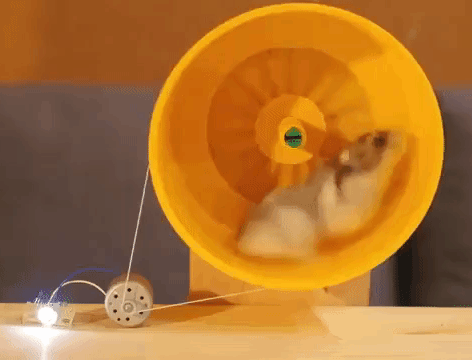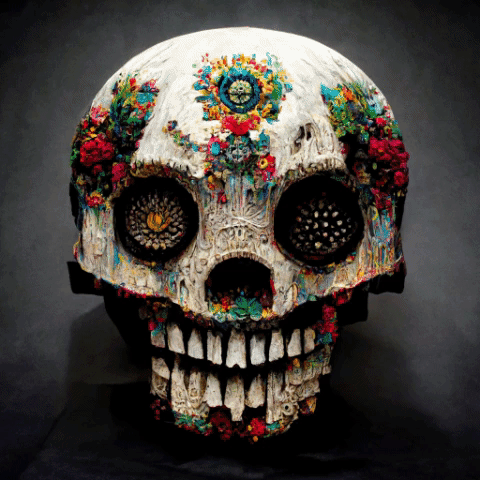On a recent podcast that I was a guest on, co-host Mark Savant spoke a hard truth. He said that creators often tell people things such as:
“Subscribe to my podcast!”
“Join my community!”
Then he added that creators are effectively—and problematically—saying, “Pay me, me, me!” all the time.
Mark’s right.
My main problem with this “pay me to create for you” approach is that—monetarily speaking—it’s a one-way street.
Watch or listen to the episode of “NFTs Made Simple” with Mark Savant and JC Doornick.
What If We Put More Focus on True Fans Who Want Real-Life Utility?
I prefer to think about what would be possible—creatively and monetarily—if creators assembled a select group of true fans who each thought and believed: “If I help build this, then I too will get a return.”
This all links with a fundamental lesson that content creators need to burn into the back of our minds—we need to change how we envision our relationship with everyone who interacts with our creative work. Importantly, we need to de-emphasize the importance of our entire audience, which includes:
Everyone who just listens to our podcasts.
Everyone who just streams our videos.
Everyone who just clicks “like” on our content.
Everyone who just buys stuff from our merch stores.
Sure, we adore those peeps. And we want them to remain part of our general audience. But the vast majority of them are not genuine fans who will help take our work to the next level.
Fans—especially superfans—want more than to just listen/watch/click/buy. They want to be part of what you’re creating. And they want to invest in you and your work, and they want to interact with other community members just like themselves.
And if you think you're all set because you jumped on the web3 bandwagon. Understand something. Your fans deserve more than JPEGs. We’re past the era where you can mint an NFT, say to your fans “buy my sh!t,” and wait for the price to rise.
Your fans don’t want to buy your NFTs so they can later sell them at a higher price. Your fans want to hold your NFTs because they provide real-life utility.
Victor Zhang put this brilliantly when he wrote:
“For NFTs to deliver on their perceived value, it is crucial that collectors are granted utility beyond the ownership of the asset.” He added, “Looking beyond static images is crucial to truly extracting value from NFTs.”
Are You Making Money from Your General Audience?
The era of the attention economy—based on the number of views, listens, or followers—is showing its limits.
The majority of content creators playing the attention economy game are struggling. Do you know any creators that are monetizing their audience and can validly say the following?
“My ad revenues keep going up!”
“Every week I score a new high-paying sponsor!”
“My subscriber numbers keep rising!”
My scientific guesstimate (ha!) is that just a tiny fraction of creators are hogging around 95% of the attention economy revenue that is allegedly available to all creators.
Are You Sprinting a Marathon on a Content Creation Treadmill?
(That’s meant to be a weird heading. It’ll make sense in a moment ...)
In podcasting and streaming, getting advertising and sponsorships for your content is about monetizing your audience. The bigger your audience is, the more money you'll make.
On the other hand, paid subscriptions are about monetizing your content.
Just sit with that difference for a while.
The problem is—and this gets to the heart of why the creator economy is messed up right now—the moment you have subscribers paying for your content, you’re forced to start sprinting on a very dangerous content creation treadmill where you constantly have to create more and more content.
Also, you're expected to create better content for your paying subscribers every time you do an episode/show. But you’re not going to create sh!tty content for your free subscribers, and great content for your paying subscribers. That’s not how it works. So, when you really think about it, that separation between free and paid is very dangerous.
Now think of tokens, which are a completely different monetization tool. They allow you to monetize your select community (which is a small subset of your entire audience).
Making Money With Your Community
If you want to make money from—and with—your community, you don’t just need their attention. You also need to make sure members are willing to take action for you and with you.
Adam Ryan put this brilliantly when he wrote that we’re moving from an attention economy to an intention economy.
Creating more content or getting more viewers/listeners/subscribers/followers is not going to create true intentions. Content has been commoditized, causing your audience statistics to become less relevant every day. (Also, everyone knows that those numbers are easily faked.)
Not convinced? Consider this. Seth Silvers, who is a colleague of mine, recently had a Tweet that reached 400,000 likes. How many Twitter followers do you think he gained after reaching nearly half a million people? Four. Yep. Not four thousand. Not four hundred. Four!
“Hi Web3, I Want to Use You To Build My Own Creator Economy”
Honestly, moving from audience to community has been around since Web2.
But the next step—which is transforming your community into an organization or a collective—can only really be achieved successfully with Web3.
I don’t want to come across as bragging, but I did this with my NFT collection. And I know I’m going to sound like a cheesy infomercial when I say this, but: You too can achieve this.
So, here’s some context. My “Silicon Carne” podcast has around 4,000 listeners. (We average around 4-5 episodes a month, and get around a total of 20,000 downloads per month.) Yet out of my total listenership, only 216 people bought 416 of my NFTs to support the creation of my podcast.
Among these different NFTs, there are 50 Socios tokens that allow their buyers to become the co-producer of my next season. The owners of those unique and beautiful tokens (see GIFs below) will share 25% of my NFT 2022-23 revenue.
It’s those 216 individuals who I consider my true fans. They’re my listeners who have shown that they’re genuinely interested in three things:
Me as an individual.
The content my team and I create for “Silicon Carne.”
Other people in our community.
And they’re less than 5% of my total listenership!
Autonomy Is The New Economy
TikTokers, YouTubers, Twitch streamers—basically all kinds of content creators—need to start thinking about:
Creating your NFT membership community.
Reinventing your business model.
Creating a new form of monetization.
If you’re a content creator, don’t you think it’s time to deplatform yourself (i.e. discard the financial shackles and creative limitations of traditional platforms)? If you do, head over to Uncut.FM to learn how you can build your own creator economy.
Also, if you’re keen to digitally mingle with like-minded Web3 enthusiasts, join our Discord.
Lastly, here are some GIFs of my gorgeous Socios NFT collection.









